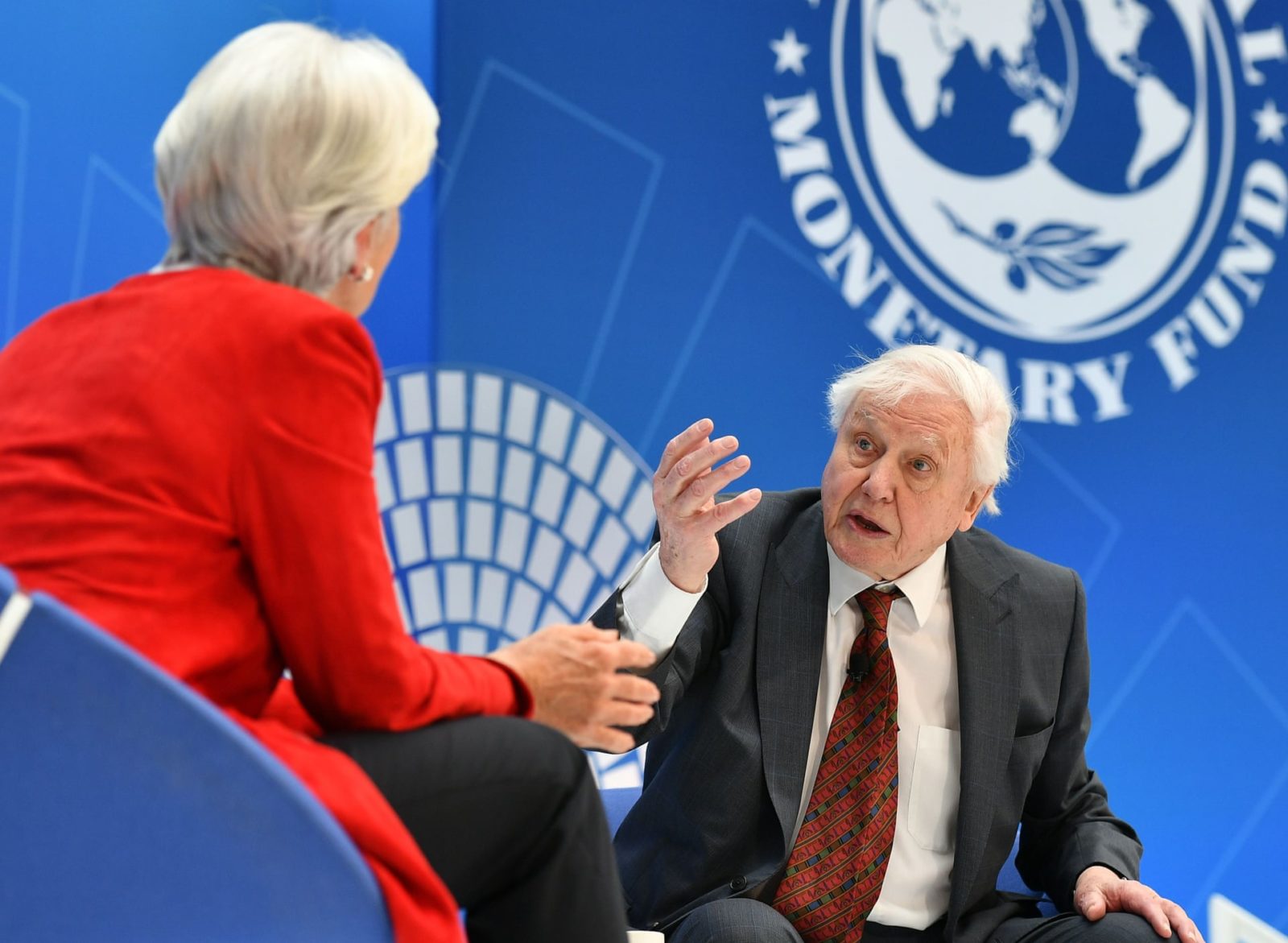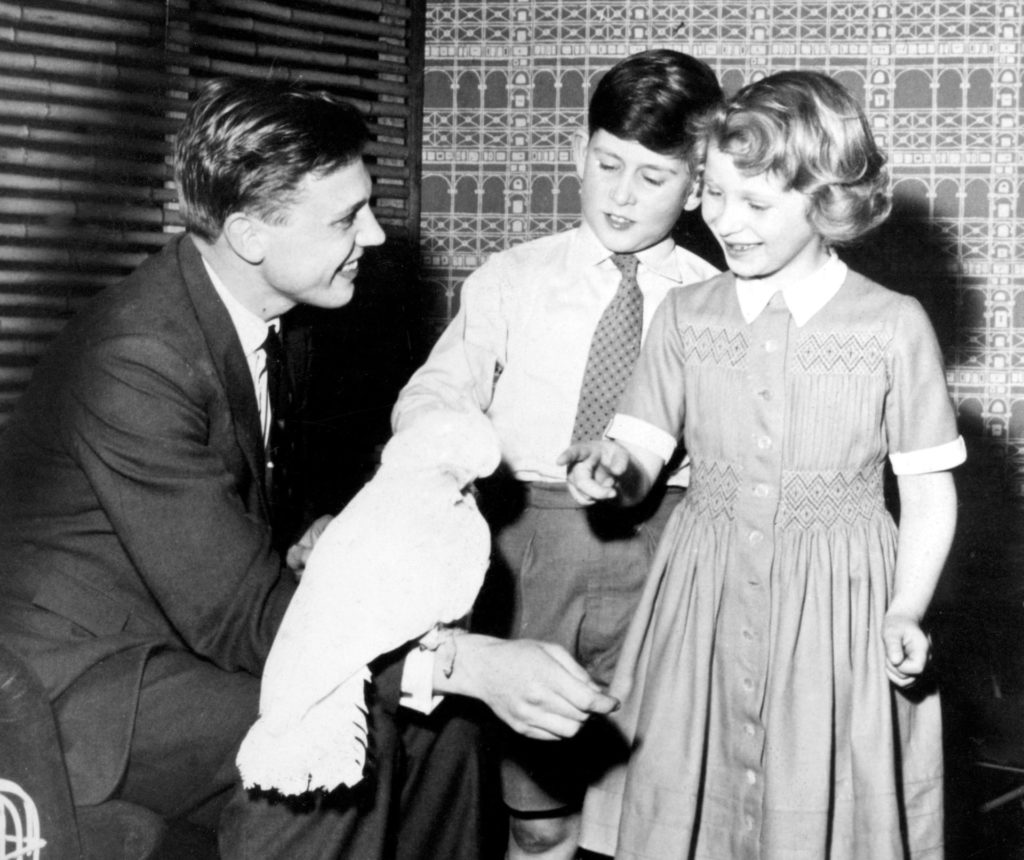David Attenborough, The Man, The Legend

He is the most beloved figure in Britain, and, at 94, a global superstar just joined Instagram and immediately raking a 2.4 million followers.
His films long shied away from discussing humanity’s impact on the planet. Now they are sounding the alarm – but is it too late?
Attenborough was born on 8 May 1926, 17 days after the Queen, and, like the Queen, he has become a symbol of stability in a turbulent world. It is hard to imagine a time before he was on our screens, affably engaging with sloths or giant turtles – partly because there wasn’t. TV was invented the year after he was born, and only began to enter people’s homes in the 1950s, when he was beginning his career. The first program he made was watched by barely 10,000 people gazing at 405 flickering black-and-white lines on large boxes in living rooms in the south-east of England. Last spring, his series Our Planet became Netflix’s most-watched original documentary, watched by 33 million people in its first month. BBC broadcast his Seven Worlds, One Planet, the 19th blockbuster series he has written and presented (add a zero and then some if also counting his pre-70s series, short series and one-offs). The television executives who keep offering this 94-year-old freelancer bountiful employment agree that he is more powerful than ever.
Attenborough and the Queen are more than just contemporaries. He first encountered the Queen’s children, Charles and Anne, in 1958, when they toured the BBC’s Lime Grove studios and the young presenter introduced them to his pet cockatoo, Cocky. In 1986, the year after Attenborough was knighted, he produced the first of six Christmas broadcasts for the Queen. In 2019, he was interviewed by Prince William on stage at Davos; the future king asked him for advice on how best to save the planet.

In our fractured age, Attenborough is the closest we have to a universally beloved public figure. Last year, a YouGov poll found him to be the most popular person in Britain. The premiere of his new series, which took place last year in London, was broadcast live in South Africa and India, where rapt schoolchildren held up signs: “Thank you for being you – Sir David A” and “Sir David please come to India please”. As he moves from the White House to the World Economic Forum, urging presidents, businesspeople and the public to better protect the environment, he has come to be viewed, in a way he sees as overblown, as a keeper of humanity’s conscience.
Despite the adulation, one charge has dogged Attenborough for decades. Critics argue that he has built himself a unique storytelling platform, only to fail to tell the most important story of all: the destructive impact of people on the planet. But one reason Attenborough has thrived on screen for seven decades is because he has always sensed how attitudes are changing and moved with the times. For a long time, he maintained that his programs must showcase the wonders of the natural world, and not speak of the human one. Now his newest series are filled with urgent messages about environmental destruction. Still, he resists the idea that he has changed; he prefers to say that it is the public mood that has transformed. After a lifetime of caution, almost despite himself, he has become a leading champion for action.
Attenborough fell in love with the natural world as a boy, exploring his way through his neighbourhood in Leicester, looking for bugs, insects and amphibians. The middle child of three brothers, he grew up in a family of teachers. His father was principal of University College, Leicester. His mother was a talented pianist. Education was revered. When I met Attenborough in the spring, he spoke of his boyhood passions – keeping tanks of tropical fish, venturing across northern England on his bike as a young teen, alone, in search of fossils.
To this day, Attenborough is still a collector – of tribal art, books and music – but although more than a dozen species are named after him, including a flightless weevil, Trigonopterus Attenboroughi, and a genus of dinosaur, Attenborosaurus, he is not an authority on natural history. “Everyone thinks he’s an amazing naturalist,” said the producer and writer Mary Colwell, who worked with him at the Natural History Unit in the 2000s. “He isn’t at all. He’s a great storyteller. Everyone thinks he makes these programs. He doesn’t – but without him they wouldn’t sparkle in the way they do.”
Attenborough agrees. “Work and reputation get separated,” he said. Forty years ago, he travelled around the world three times in order to make his groundbreaking series Life on Earth. He wrote the script, and every page of the accompanying book. “But now I just write and speak the words. And people say: ‘What was it like when you saw that animal charging in?’ And I say: ‘I wasn’t there. Thirty cameramen worked on this thing.’ I’m given credit for things I don’t do. I am grateful, but I’m also embarrassed.”
The only praise Attenborough will accept is for his skill as a storyteller. Robert Attenborough, David’s son and an anthropologist at the University of Cambridge, remembered, as a teenager, “watching him in the raconteur role as a host of a dinner party and admiring the skill with which he would tell a funny story. Sometimes they get slightly improved. That’s something we used to tease him about. Of course he wouldn’t do that, then or now, when making a serious point.”
Attenborough’s storytelling has been honed over seven decades in television – and he is, above all, a TV man. After studying natural sciences at Cambridge, he married his university sweetheart, Jane Oriel, and ditched his boring junior publishing job for the glamorous new world of television. He started off behind the camera, after one of his first bosses decided his teeth were too big for a presenter. In 1954, Attenborough travelled to Sierra Leone with Jack Lester, London Zoo’s curator of reptiles, to film a new series, Zoo Quest. The concept was simple: they would catch wild animals – their bounty from Sierra Leone included pythons, bird-eating spiders and their big prize, the bald-headed rockfowl – and bring them back to London to add to the zoo’s collection. At the outset, Attenborough was the producer, director, sound man and animal-wrangler. He only ended up being the presenter because Lester was taken ill after the first episode.
Zoo Quest was broadcast in Black & White, but the original colour footage was later discovered by BBC archivists, is beautiful. Attenborough narrates his encounters in clipped, 1950s, BBC-issue received pronunciation, with little trace of his more expressive later style. Although the colonial animal-snatching conceit of Zoo Quest is extremely dated, each episode focuses as much on the human worlds he visits as the exotic animals. Attenborough’s script is factual, respectful and open-minded; his films unsensationally depict nudity, polygamy and other cultural traditions, alongside the animal hunt.
Over the next few years, new series of Zoo Quest appeared and Attenborough’s reputation grew. With his keen eye for the perceptions of his TV audience, he adapted cannily to a rapidly expanding industry. By the dawn of the 60s, as he admitted in his autobiography, Zoo Quest was looking “increasingly antiquated”. He realised that it was time for a new approach. His next Quest series, filmed in northern Australia, eschewed attempts to bring animals home and instead depicted the cultural lives of Aboriginal peoples.
The trip to Australia inspired him to take a part-time postgraduate degree in anthropology, but he was tempted back to full-time TV work before he could complete it. In 1965, he became controller of BBC Two, an appointment greeted with scepticism by “TV professionals” quoted in newspaper columns of the day. At first, he was considered lightweight, a youthful bit of eye-candy, but he was soon hailed for his “unexpected” success, as a Daily Express profile put it. “Everybody forgot I wasn’t just a naturalist – I was always a trained TV man,” he told the paper in 1965. “Hell, I love it. I watch everything. Straight home from the office – switch to BBC Two – see all my babies.”

As the channel’s controller and then director of programs for both BBC channels, Attenborough was a great innovator. In 1967, the government decided that BBC Two would become the first channel to switch to colour, and he set about exploiting this advantage. He put snooker on the channel and helped devise new forms of sport: one-day cricket and rugby league under floodlights. Programs that emerged under his watch include Dad’s Army, Porridge and Monty Python’s Flying Circus. In 1972, he championed “community programming” that included what has been described as the first sympathetic portrayal of transgender people on British television; he even suggested phone-ins to widen audience participation, years before they became a staple of TV and radio.
One of his lasting innovations was the all-you-need-to-know documentary, beginning with Kenneth Clark’s Civilization. Attenborough designed this epic, 12-part series about the history of art and culture to showcase the glory of colour television. These monumental series became known as “sledgehammers”, and there followed uncompromisingly highbrow treatments of human evolution, economics and US history. But Attenborough believed the best subject for sledgehammer treatment was yet to come: natural history.
Attenborough’s achievements at BBC Two made him a prime candidate for director-general, the top job at the corporation. But he was tiring of the senior executive’s life – desk-bound, constant meetings – and in the early 70s he resigned. Attenborough yearned to be more creative and had seen the thankless politics involved in the top job.
Instead, he persuaded the BBC that he could create a Civilization-style treatment of the evolution of plants and animals. This series took three years to make, and the budget was so big that Attenborough had to pitch to US networks for funding. (He still enjoys impersonating a skeptical American TV man aghast at the prospect of funding a series that opened with “slime mould”.)
Life on Earth was broadcast for 55 minutes on 13 consecutive Sunday evenings in 1979. Despite the presence of a safari-suited Attenborough, binoculars around his neck, skipping between exotic locations, the early episodes often feel like a lecture with moving pictures. Our handsome presenter tries to make the best of diagrams of DNA, micro-organisms and 200m-year-old fossils. But as its epic story slowly unfolds, the series warms up. The writing is often superb: “Four million animals and plants in the world,” says Attenborough, “four million different solutions to staying alive.” The penultimate episode, on primates, features the first memorable Attenborough “two shot”, where he appears alongside another animal. He joins a grooming session among mountain gorillas in Rwanda, and still has the presence-of-mind to whisper: “There is more meaning and mutual understanding in exchanging a glance with a gorilla than any other animal I know.” Although some facts have changed – we now know there are more than 8m species, not 4m – the series stands the test of time; one Cambridge professor still shows his undergraduates the primates episode each year.
After the success of Life on Earth, Attenborough spent much of the 80s completing what became a triumvirate of blue-chip behemoths, with The Living Planet exploring ecology and The Trials of Life revealing animal behaviour. He also turned his attention to series about less fashionable subjects: plants, spiders, stick insects and other invertebrates. Audiences liked his enthusiasm, his quick wit and his affection for animals, already evident from his early days bottle-feeding a tiny African bush rat in Zoo Quest.
By the early 80s, Attenborough’s programs had been broadcast around the world and he became recognised wherever he went. But he was not yet, to use another label that vexes him, a global superstar. Until recently, when Attenborough’s series were shown on US television, broadcasters would replace his narration with voices they thought an American audience would prefer. In 2010, when Life was broadcast in the US, Oprah Winfrey was the narrator.
Viewers tend to assume Attenborough writes every word he says on screen, while TV people think his lines are written for him. The truth is somewhere in between. Attenborough’s scripts are written by production teams, but he is an unusually rigorous editor and rewriter. Even today, Attenborough rewrites each script to fit his own turn of phrase and checks for accuracy.

“You change the pace, you change the timbre, you change the mood, and the commentary has organic flow,” says Attenborough. “If the last sentence ended 10 seconds ago rather than one minute ago, you start in a different kind of way. I don’t think other people do that. It’s a craft, and I quite enjoy it, actually.”
His colleagues think his voice has improved with age, although it’s a voice of an older man, it’s become even more powerful, with a timbre and an emotional resonance.”
At 94, Attenborough is more in demand than ever. Susan, his daughter, keeps a watchful eye on him and tries in vain to scale back his speaking engagements and charitable commitments. (He has never put his name to any commercial product.) The BBC want him to narrate Planet Earth III, but he will be 96 when the time comes. Meanwhile, he devotes most of his considerable stamina to appealing for radical action to tackle the climate crisis and biodiversity loss. In Poland, at the UN climate change summit in 2018, he was chosen to represent the world’s people in addressing leaders from almost 200 nations. At Davos in early 2019, he questioned the wisdom of perpetual economic growth: only “a madman or an economist” would cling to this notion, he argued..”



